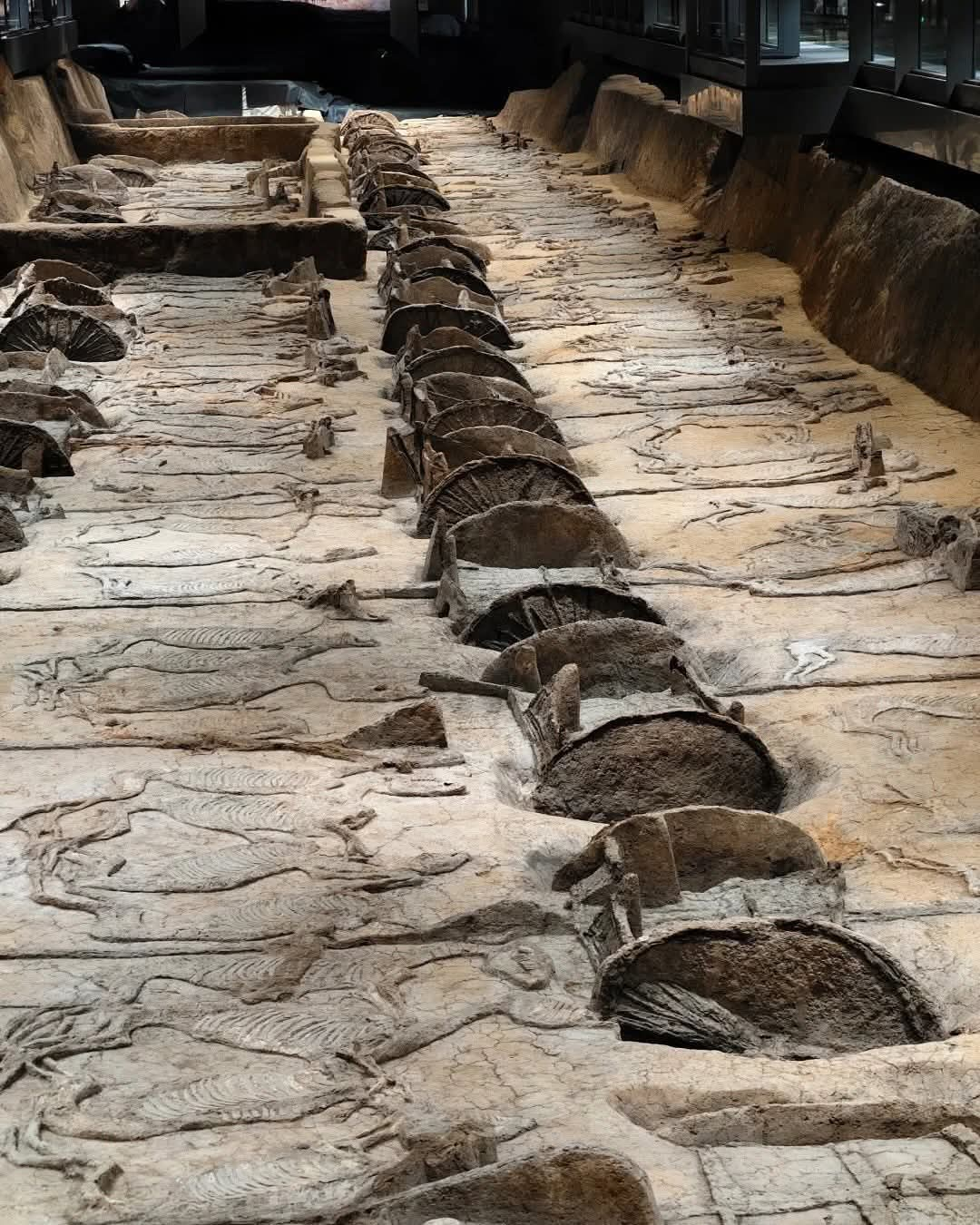Archaeology
CHINA UNEARTHS LARGEST ANCIENT CHARIOT PIT: A ROYAL GLIMPSE INTO CHU DYNASTY GRANDEUR

By Daire Pere-ebi
In a discovery hailed as one of the most significant archaeological finds in recent years, researchers in China have uncovered the largest sacrificial chariot pit ever found in the country. Located at the Xiongjiazhang Mound in Jingzhou, Hybrid Province, the site—dubbed the Chariot and Horse Array of the Chu King–contains a staggering 66 chariots and 258 horses, believed to have been buried in honor of an elite ruler from the ancient Chu state.
The Chu civilization thrived between the 8th and 3rd centuries BCE, during China’s Spring and Autumn and Warring States periods, before the eventual unification under the Qin dynasty. The massive burial site is part of a broadey royal complex and offers a rare, richly detailed window into the opulence, rituals, and hierarchical structures of one of ancient China’s most powerful kingdoms.
The layout of the pit is both grand and methodical. Chariot are metriculously arranged in organized formation, suggesting military precision and ritual planning. The large number of sacrificial horses—many showing evidence of ceremonial burial–underscores the Chu aristocracy’s belief in continuity of power and prestige in the afterlife.
Experts believe the pit was created for a high-ranking noble, possibly a Chu king, given the wealth and symbolism reflected in the burial. The craftsmanship of the chariot and the scale of the offering speak volumes about the era’s advanced metallurgy, ceremony practices, and social structure.
Archaeologists say the discovery not only enhances understanding of Chu funerary traditions but also provides critical insights into the military capabilities and ceremonial life of pre-imperial China.
This monumental find deepens appreciation for the cultural legacy of the Chu State-once a dominant force in ancient China—and affirms its lasting influence on Chinese heritage long before the rise of a unified empire.
Credit: Weired, Wonder, and Amazing Things


